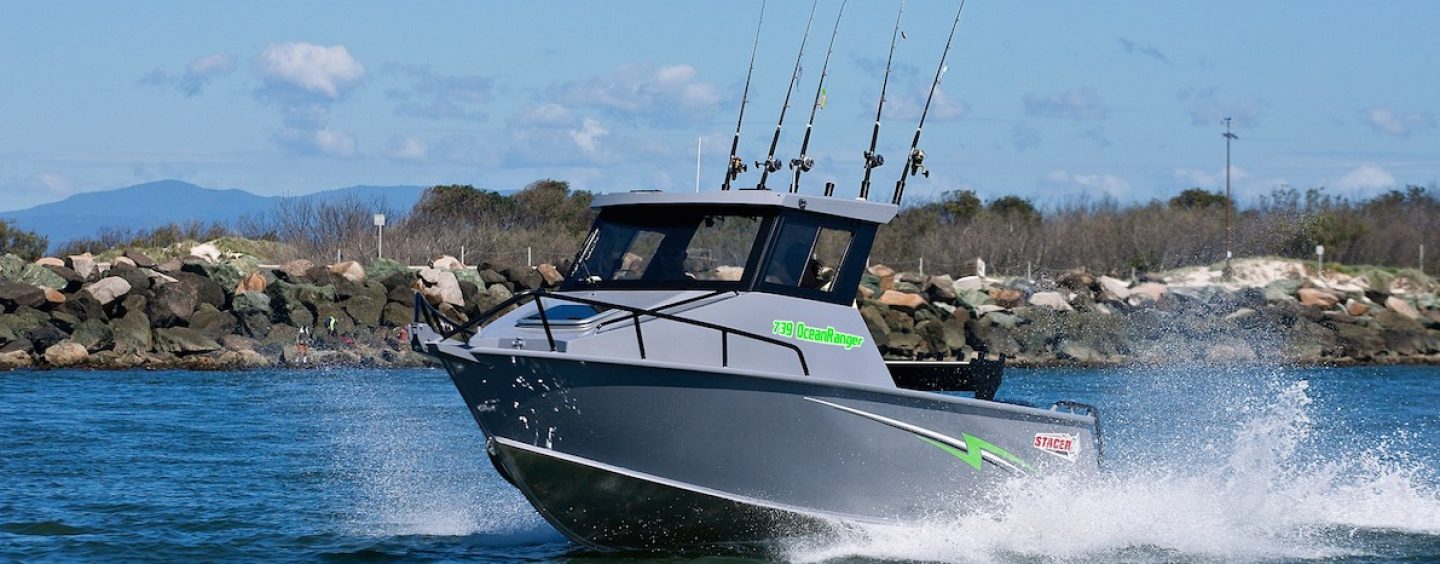Venturing offshore is an amazing experience and is full of excitement when landing fantastic catches of reef fish, up-close encounters with whales and dolphins, or simply seeing the coastline from a different angle to those normally seen inside the waterways of the Broadwater or Moreton Bay. Safety of yourself and your passengers, however, must always come first.
Experienced skippers on commercial vessels with years of local knowledge never underestimate the dangers associated with crossing their local coastal bar – and neither should you.
If you are considering venturing offshore for the first time, and need to cross a coastal bar, then please take heed of this advice: Do not attempt it in your own boat without having gained experience multiple times in another vessel skippered by someone else who knows the bar in all weather conditions.
Conditions on a bar can change quickly and without warning, even on a good day. Even the Gold Coast Seaway, which is the safest coastal bar to cross in Southeast Queensland, can be particularly nasty in an ebb tide, with a large swell and strong breeze. Going out through a coastal bar on a high tide in light winds and small swell is a totally different scenario to coming back in after a day’s fishing when the tide turns, the wind is up, the swell arrives, or wind-swept seas are present.
Here are a few tips you should always follow before crossing a coastal bar:
✔ Never cross a coastal bar without recent local knowledge. Sand banks constantly shift in coastal bars from day to day, and can cause waves to break unexpectantly in front of you (and behind you when coming back in).
✔ Ensure that the capabilities of your vessel and your own skills are up to the task. Coastal bars are no place for beginners. Your boat must be seaworthy, suitable and can handle impacts from waves.
✔ Never venture offshore without a VHF Radio. Always log on and off with the nearest limited coast station, such as VMR or Coastguard. Mobile phones are simply not a suitable alternative to a communications safety device.
✔ Always wear a lifejacket, regardless of your vessel size. Consider how difficult it would be to grab a lifejacket from your boat once upturned, then attempting to put it on when you are in the rough conditions that caused your vessel to capsize. Consider how long it would take for rescue services to reach you while treading water. It is required by law in Queensland to wear a lifejacket in an open boat under 4.8 metres when crossing a coastal bar.
✔ Check the weather conditions. Not only should you check the latest weather forecast for the day, but also check the current live wind, sea and swell conditions. Weather forecasts and current conditions can be obtained from the nearest limited coast station by VHF radio or telephone.
✔ Ensure you have all your safety gear on board and in good working order. These include an EPIRB, flares, V-sheet, fire extinguisher, torch, PFD1 lifejackets, an anchor with enough chain and rope, navigation charts, compass, handheld GPS, drinking water, oars or paddles, bailing buckets, and a bilge pump. Brief all your passengers how to use each piece of safety gear.
✔ Ensure you have enough fuel on board. Allow, at minimum, an additional 30% of fuel over and above what you think you may need.
✔ Test your engine(s) and steering controls are in perfect working order. Test your bilge pump(s).
✔ Secure all loose items on board, including eskies, fishing rods, and buckets. Secure all hatches.
LOGGING ON AND OFF
To log on, switch to the working VHF radio frequency for the nearest limited coast station (VMR or Coast Guard). VHF channel 16 is the distress, safety and calling frequency, and may be used to make initial contact with the coast station. Ensure you log on prior to crossing any coastal bar.
When logging on, state the following information:
• Vessel name
• Vessel registration number
• Number of persons on board
• Point of departure
• Destination
• Mobile telephone number on board • Estimated time of return
Remember to log off upon your return, once you are back safely inside the bar.
GOING OUT
Slow displacement boats and high-speed planing boats may handle crossing a bar differently.
The boat must match the energy of each incoming wave by maintaining a speed that will lift the bow over the wave, and reduce the chance of the wave breaking over the bow into the boat.
Do not hit waves at high speed, but take them as close to head-on as possible. Be prepared to take a wave head-on and take water over the bow if there is no other way.
When crossing a bar, you should:
✔ cross on an incoming tide when possible.
✔ look for lulls and choose the line of least wave activity and avoid breaking waves (the calmest water).
✔ look for the deepest water to avoid grounding.
✔ keep your boat head-on to approaching waves. Do not let your boat turn side on to approaching waves.
✔ head up into the waves and accelerate where possible, but avoid getting airborne.
✔ head for the lowest part of the wave and continue until clear.
Once you have started crossing, keep going. Trying to turn around in front of an incoming wave can be dangerous.
Assess the wave patterns and choose your route carefully, avoiding high standing waves.
Prior to crossing a bar with breaking waves, it is important to sit, wait, and observe the bar for at least 10 minutes to assess the wave situation. Breaking waves indicate shallow water. As any surfer knows, the largest waves only occur at intervals of at least 10 minutes. So spend at least 10 minutes to work out the best route through the deepest water.
COMING IN
When coming in, high-speed boats (capable of at least 18 knots) should travel at the same speed as the waves. Slow displacement boats may have to come in very slowly to avoid surfing and getting caught side-on to a wave.
The aim is to travel in on the back of a wave and stay ahead of waves that break behind the boat. Watch for patterns and deeper areas.
When returning over a bar, you should:
✔ look for lulls and choose the line of least wave activity.
✔ look for the deepest water to avoid grounding.
✔ increase power to maintain speed within the set of waves when approaching from the sea.
✔ position the boat on the back of the wave. Do not surf down the face of the wave.
✔ adjust the boat’s speed to match the speed of the waves, but do not try to overtake the waves.
In bad conditions, it can be safer to stand off in deeper water, or find another shelter, instead of re-crossing the bar.
BE SAFE
Never underestimate a coastal bar. Even small waves can capsize, swamp, or sink a boat. If you are unsure or inexperienced, do not go out and risk lives. Wait until conditions are good for you to cross safely. And once again, always wear your lifejacket.
By Nic Welch
(Published in the the Oct – Dec 2019 edition)



























